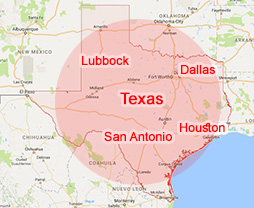Aggravated Robbery
A. A minimum of two (2) officers must be dispatched on all robbery alarm calls or robberies in progress.
B. If possible, the call taker must encourage the person calling to remain on the telephone so as to provide updated information concerning the situation as officers respond.
C. Officers responding to a robbery alarm or robbery in progress call must exercise extreme caution when approaching the scene and always assume that a potential for danger exists.
D. The responding officer must determine if further assistance is needed to properly contain the area. The responsibility for containment must rest with the officer assigned the call until a supervisor is on the scene,
E. If the first officer on the scene cannot determine if the robbery is still in progress, the officer must assume a position of concealment that provides the best vantage point of the scene and, if possible, await arrival of assist officers before approaching the scene.
F. If the reporting person is no longer on the phone with the call taker, the first officer on the scene will have dispatch personnel contact the complainant by telephone to determine if the suspects are still on the scene. This should be accomplished with caution to avoid placing the possible victim in any greater danger.
G. When a sufficient number of officers have arrived on the scene, the officers must take whatever action is necessary to protect themselves and the victim while attempting to apprehend the actor.
1. If the robbery is at a business, financial institution, or residence and is still in progress, officers must attempt to remain concealed outside the building until the suspects emerge from the building. Once outside, the officers must attempt to apprehend the suspects if apprehension can be made with an acceptable degree of safety.
2. If the robbery is at a business or financial institution and the suspect has left the scene, the dispatch employee must obtain descriptive information about the employee who must be exiting the building to contact officers covering the building. The information obtained must be passed on to the officers responding to the call. Officers must wait for the contact person to emerge from the building and contact the officer before the officer enters the building for further investigation.
3. When officers gain control of the scene the responding officer must determine the need for any medical assistance for victims and request same, protect the crime scene, and broadcast a physical description of the suspect, weapon, and vehicle.
H. Officers in the general area, who have not been dispatched to the scene, must not go to the scene, but must remain alert to any subjects and vehicles matching the description of the perpetrators.
I. If the robbery becomes a hostage situation, the officers must follow the department’s procedure for the handling of hostage situations and attempt to maintain control of the scene. Officers must establish an outer perimeter appropriate for the situation, until SWAT arrives to negotiate the release of the hostages. The safety of the hostages must remain the first priority of those officers responding to this or any similar situation.
J. Officers are cautioned to remember that the main objective of the police is the protection of life and property; therefore, the officers should take whatever action is necessary to ensure that the victims and potential victims are protected from injury.
K. If evidence of the offense is present, a request for Crime Scene Search Unit assistance must be made.
L. For aggravated robbery scenes, the initial responding supervisor will appoint an officer the responsibility of completing a Crime Scene Log. The Crime Scene Log will include all persons present in the crime scene, including police, fire, ambulance, and medical investigators. Once completed, the log will be given to the on-scene robbery investigator or forwarded to the Robbery Unit if no investigator makes the scene.
M. The supervisor will ensure the crime scene is properly secured and protected with tightly controlled access. Officers not necessary to the successful operation at the scene will be immediately returned to their regular duties.
N. When information indicates a robbery has occurred, the Robbery Unit must be notified prior to responding officers leaving the scene.
O. During normal business hours, the Robbery Unit will be contacted directly. If after hours, notification will be made through the Communications Division. Based on a review of the circumstances as related by the responding officer, the Robbery Unit detective will have the discretion to make the scene.
P. When a robbery detective makes the scene, the detective must be in charge of the scene and must coordinate the processing of the crime scene with the crime scene search officer. This must include providing instructions to patrol personnel as to their duties and responsibilities concerning the interviewing of witnesses and/or suspects as well as the protection of the crime scene. When patrol supervisors are on the scene of a robbery, the supervisor will only be responsible for those functions of a patrol-oriented nature and must allow the detective freedom to take charge of the investigation.
Q. The patrol division where the offense occurred must ensure that patrol functions are carried out properly if a robbery detective does not make the scene and that a thorough preliminary investigation is conducted and a report completed.
R. In cases where the victim is transported from the scene by ambulance and the arriving officers find little physical evidence, the officers must proceed to the hospital only after other units have arrived to secure and protect the crime scene.
OTHER POLICE RESPONSIBILITIES
A. Witnesses
1. Witnesses should be encouraged to remain at the scene until either the investigating officer or the robbery detective interviews them. In some situations, the witness may be offered the option to provide a statement at a police facility rather than at the scene. If the witness is a juvenile, the parents are to be contacted.
2. While at the scene, the investigating officer should attempt to identify each witness by name, age, address, phone number, and write a brief narrative of what they observed and where they were when they observed it.
3. Witnesses should be interviewed separately, either at the scene, the hospital, or a police facility.
B. Disposition of weapon
1. Unless the possibility exists that a weapon used in a crime may be stolen, misplaced, carried away or otherwise moved by others, it should not be handled or disturbed.
2. If the weapon is confiscated from the assailant or victim, the officer taking charge of it must be required to tag the weapon as evidence or property, and complete all necessary reports.
3. Should it become necessary to move a weapon, the person moving it must mark the spot where the weapon was originally found.
4. In all other cases, the scene should not be disturbed so that crime scene officers can process the area.






